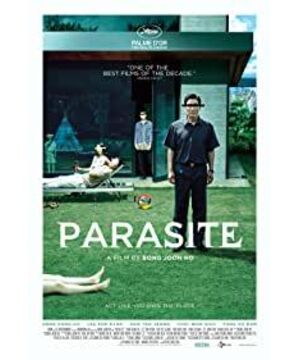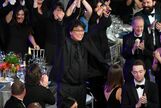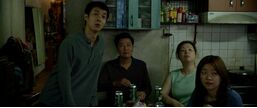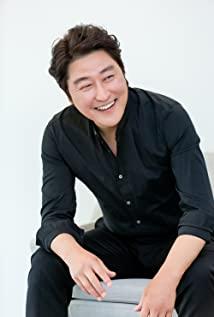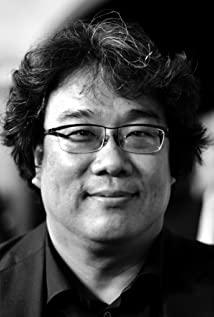First of all, we must know that in the heart of a real creator, there are one or two "motifs" that they most want to express. These are almost their secrets. It is not easy to say, and it may be difficult to describe clearly.
Filming is very tiring, both mentally and physically. Therefore, if the creators' ideas to express the "motif" are not strong enough, they will definitely not have enough energy and energy to overcome all difficulties, constantly deny themselves, and shoot. Film after film, risking mental and financial risks, brings brand-new things to the screen, waiting to communicate and communicate with most people.
Directors who have the ability or are lucky enough to continue filming, the works in their lives have turned them into missionaries to a certain extent. Many of them make genre films. The mission of genre films is to please the audience, and it is not easy to carry overly obvious thought expressions of the creators. But they can always find a space or a gap, embed their own private goods, so that they can repeatedly tell their own truth. For example, Ang Lee has been talking about "love" (the price of love, the sudden love of love, and sometimes implicitly expressing "sex"), for example, Shamaran has been teaching you to "believe" and find your own purpose, such as Scorser Si always likes to shoot heroes who are not understood.
Since Feng Junhao’s first feature film "Kidnapping the Dog in Front of the Door" in 2000, his creations so far have tried to reflect the reality of the society in which he lives. He is a very wacky otaku himself. He likes some inexplicable movies and comics. It sounds like you and me who are addicted to the Internet, but he is obviously more powerful. He made the movie to reach more people. He wanted to remind the Korean people: It is the fault of the entire society that the murderer cannot be caught ("Memories of Murder"), the United States is a virus that resides in Korea ("Han River Monster"), capital The horror of ism and globalization ("Yuzi").
He is also obsessed with expressing the proposition of "class", "Snow Country Train" is already obvious, and "Parasite" is his strongest expression. If you look back and look at his work "White Man" at the Korean Film Academy (KAFA) in 1994, you can know that he has almost prepared for "Parasite" for 25 years.
The plot point in the screenshot is the protagonist wearing a white shirt. After sending the car for repairs, he finds that he has to walk back to the company. He turned around and saw the company (white office building) in the distance with us, which was above the bungalow. Later, he walked through the bungalow area and saw the people who could be classified as the "lower class."
Because of a certain event, people at the upper level have to roam the lower level—this kind of "top-down" approach has a lot of room for development and is very suitable for creators who intend to reflect reality. Kurosawa Akira's "Wild Dogs" (1949) was caused by the police looking for guns, and "Heaven and Hell" (1963) was caused by the kidnapping of the boss's driver's son. They all used this as a driving force to bring the characters into the Japanese society. On the lower level, take the audience to see the true face of society.
When shooting "The White Man", you can see that Feng Junhao is not very mature. He only used the composition of the picture to imply the disparity between "up and down". Later, the protagonist walked into the bungalow area without any dramatic conflict. He simply used the means of "showing" to let us understand the meaning. This is a bit cryptic, and it's a way of getting scolded by the teacher in the screenwriting class. In "Parasite" 25 years later, he directly merged "up and down" into one, expressing his original thoughts with a comic-style exaggerated imagination.
"Parasite" is divided into two parts, the first half is a comedy, that is, how a poor family can occupy a rich family. The first half of the plot may have three sources of inspiration, one is Hitchcock, the other is Masahira Imamura, and the third is Rossi's "The Servant" (1963).
Hitchcock loves to use the concept of "substitute/symmetry" to lay out the story. For example, "Victorius" is two women, "The Train Strangers" is a cross killing, and "North by Northwest" is caused by being killed. Misplaced identity, in short, there is a pair of symmetrical existence. The disparity between the two families in "Parasite" starts from the first step into the mansion and extends to after the heavy rain: the poor sleep in the gymnasium pitifully, while the rich have a party to celebrate the sunny day. At this time, Feng Junhao extended the proposition of class from two families to a wider group. It was also here. Song Kanghao was already looking sour when he was shopping in the supermarket.
Shohei Imamura is a director who loves to use animal images. He is keen to directly shoot animals that look a little disgusting, such as croaking frogs. In "The Pig and the Warship", he even directly used the pig to refer to the Japanese at the time. The later "Eel" has a more restrained usage. When he shoots sex scenes, he also likes to shoot people as ugly, primitive, and sensual, just like mating animals. In "Parasites", Feng Junhao photographed the poor family as cockroaches/worms in many places. For example, at the beginning, insect-spraying smoke came out of the window, but Song Kanghao said that it was just right to kill the insects in the house: they are the insects that should be culled. For another example, in the scene of the rainy night, a family embarrassedly returned home from the mansion. They walked all the way from top to bottom to the flooded street. A overhead shot showed their true shape, just like cockroaches fleeing away. .
Rossi's "The Servant" (1963) tells the story of a servant who reversed his position and finally occupied the master's house. Feng Junhao borrowed something visually. For example, when his son went to a mansion for the first time, he passed many stairs and the camera turned left and right. Every corner was full of surprises. The beginning of "The Servant" was also designed like this. The son went to see the rich mother, and the mother was sleeping, just like "The Servant". Even in the middle, the poor family took advantage of the owner to go out and temporarily occupied the mansion, which was similar to the composition of The Servant.
There is no shame in embezzling elements, Feng Junhao has his own image, which is a "parasite."
The image of "parasites" appeared as early as "Kidnapping the Dog in Front of the Door". "Kidnapping a Dog in Front of the Door" lives under the weird security guard, who looks like he is secretly stewing dog meat. The protagonist follows him, but finds that the garbage dump next to him makes strange noises. He turned his head, but a person appeared in the garbage dump.
This is the prototype of Bong Joon-ho's "Parasite". In "The Kidnapping of a Dog in Front", he was just a functional villain. He chased Pei Dou Na for a tense chase, and was later caught by the police. 19 years later, Feng Junhao used the image of parasites again to make it an important tool for expressing "class." From this perspective, as a creator, he combined "up and down" into one, making the mansion a perfect image that refers to the entire society, and then turning the underground villains into "parasites", making it dormant on "up and down". Then, use the first half of the comedy to divert the audience’s attention, and then open the entrance to "Xia" during the rainy night (that is, when the cockroaches show up). This is a poor view and enters his narrative completely. layout.
"Broken Break" is Bong Joon-ho's 1994 graduation work at the Korean Film Academy. From "Broken Break" to "Parasite", it has witnessed how a creator continuously explores, perfects, and then evolves. To some extent, "Parasite" is a large collection of his past elements, and it is also his most mature expression of class propositions.
View more about Parasite reviews


